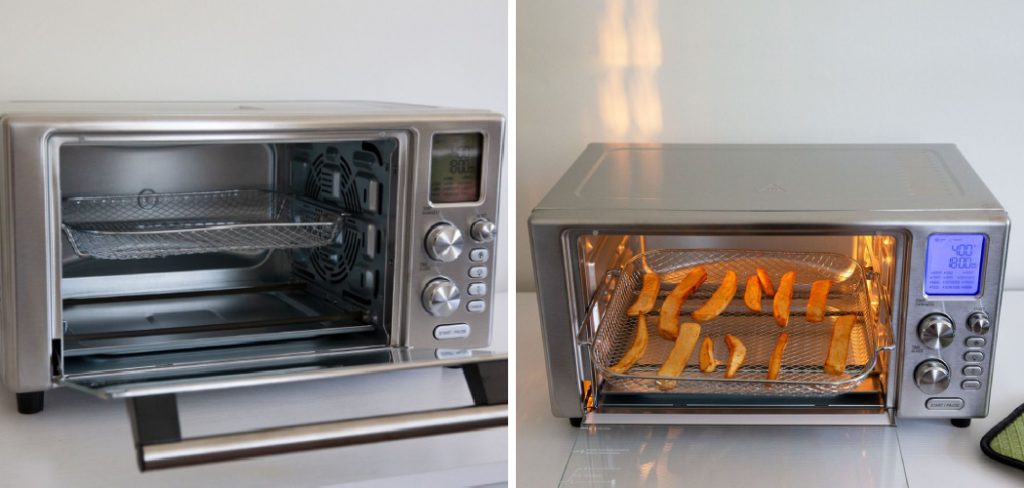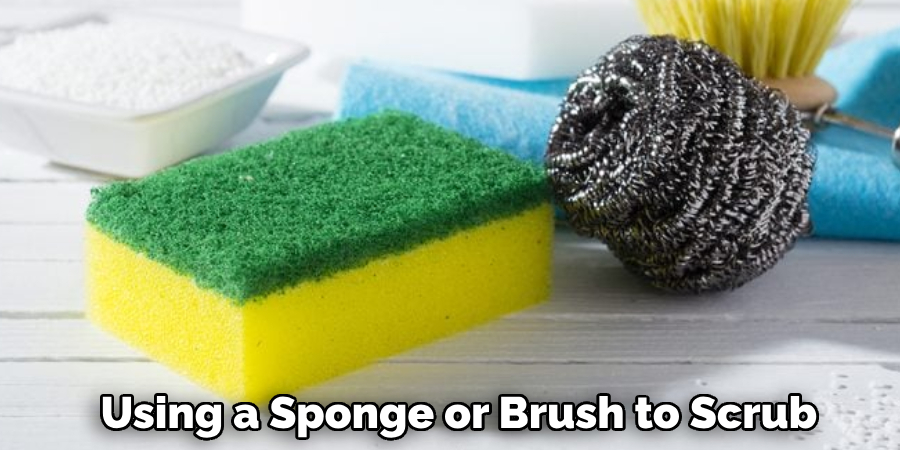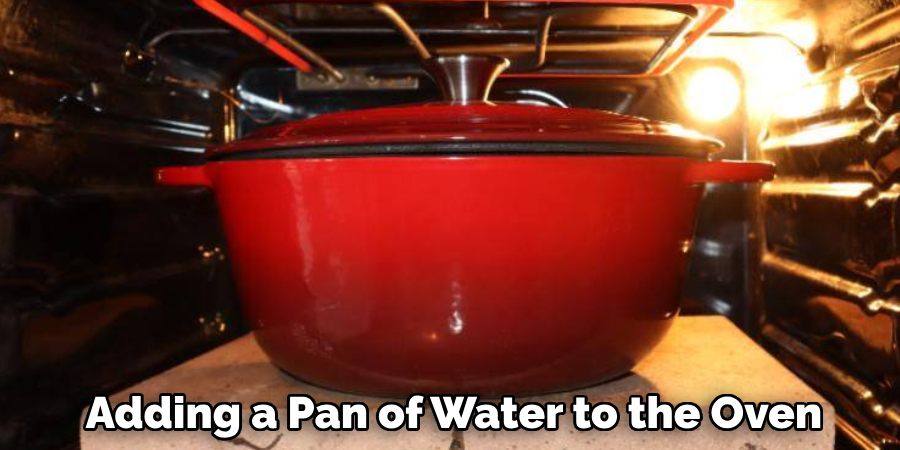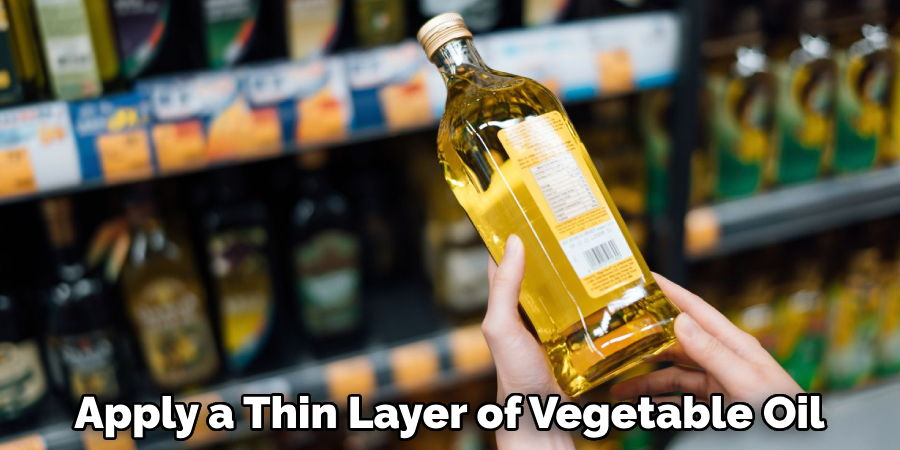Drying herbs in the oven is a convenient and efficient method that retains the flavor and aroma necessary for enhancing any culinary creation. Whether you have grown herbs in your garden or purchased fresh bundles from a local market, drying them allows you to preserve their essence for a longer time.

In this guide, we will specifically explore how to dry emeril lagasse in the oven, a technique that is particularly useful when you need to quickly prepare dried herbs for storage or use. Follow these simple steps to ensure your herbs are perfectly dried and ready to add a burst of flavor to your dishes.
Why Drying Cookware in the Oven is Important
Drying cookware in the oven is a crucial step in ensuring the longevity and performance of your kitchen essentials. Proper drying prevents moisture from lingering on the cookware, which can lead to rust, corrosion, or unwanted bacterial growth. This is especially important for materials like cast iron, which require thorough drying to maintain their integrity and non-stick properties.
Additionally, using the oven to dry cookware provides a consistent and even heat that can thoroughly evaporate any residual water, unlike merely air-drying, which might leave small amounts of moisture in crevices. By incorporating oven drying into your kitchen routine, you ensure that your cookware remains in pristine condition, ready for the next cooking adventure.
Cleaning the Cookware Thoroughly
Before drying your cookware in the oven, it is essential to clean it thoroughly to remove any food residues or stains. Start by washing the cookware with warm, soapy water, using a sponge or brush to scrub away any stuck-on particles. Pay special attention to the handles and corners where food particles can accumulate.

For stubborn residues, allowing the cookware to soak in soapy water for a few minutes can help loosen the debris. Rinse the cookware well under running water to ensure all soap is removed. For items like cast iron, it’s crucial to dry them immediately to prevent rust; therefore, be prepared to transition swiftly from washing to oven drying. Cleaning the cookware thoroughly not only ensures effective drying but also maintains the quality and taste of your food, free from old flavors and residues.
10 Methods How to Dry Emeril Lagasse in the Oven
1. Use Low Oven Heat for Safe Drying
The first method for drying Emeril Lagasse cookware in the oven involves setting the oven at a low temperature, typically between 200°F and 250°F. This gentle heat helps remove any moisture that may remain after washing the cookware without causing damage to the material. Non-stick coatings and stainless steel need careful handling, and a low temperature is ideal to ensure that the cookware doesn’t overheat or become warped.
Place the cookware in the preheated oven and leave it for about 15 to 20 minutes. This will allow all the residual moisture to evaporate, effectively drying your cookware and reducing the risk of rust.
2. Towel-Dry Before Oven-Drying
Before placing Emeril Lagasse cookware in the oven, it is recommended to thoroughly towel-dry the surface. This preliminary step is essential to remove the majority of the water and reduce the drying time required in the oven. By towel-drying first, you also minimize the risk of water spots or streaks that can form during heating.
Use a lint-free cloth to ensure that the cookware’s surface remains clean and streak-free. After removing as much moisture as possible manually, the oven can then be used to eliminate any remaining dampness that the towel couldn’t absorb.
3. Use a Rack for Even Air Circulation
Using a baking rack within the oven is an excellent method to ensure even air circulation around the cookware. When Emeril Lagasse cookware is placed directly on an oven shelf or baking sheet, parts of it may not dry completely due to insufficient airflow.
Elevating the cookware on a rack solves this problem by allowing hot air to circulate all around, effectively drying both the exterior and interior surfaces uniformly. This is particularly useful for larger items like roasting pans, which may have trouble drying completely when laid flat.
4. Leave the Oven Door Slightly Ajar
A great tip for drying cookware, especially pieces with non-stick surfaces, is to leave the oven door slightly ajar while drying. This creates a small gap for moisture to escape, preventing condensation from forming on the cookware. The release of steam keeps the cookware dry and helps maintain its non-stick coating.

Leaving the door open slightly also prevents the interior from becoming too hot, which can be crucial when working with temperature-sensitive materials. This technique not only promotes effective drying but also extends the lifespan of your cookware.
5. Use Residual Heat After Cooking
Another energy-efficient method for drying Emeril Lagasse cookware is to take advantage of residual oven heat after cooking. Instead of letting the oven cool down unused, you can place freshly washed cookware inside to dry as the oven slowly loses its heat.
This gentle, declining temperature helps to evaporate any moisture without using additional electricity or gas. Be sure to clean and towel-dry the cookware before placing it in the cooling oven. This method is particularly convenient for those who wish to minimize energy consumption while keeping their cookware in perfect condition.
6. Dry in Batches to Save Time
If you have multiple pieces of Emeril Lagasse cookware to dry, consider drying them in batches. Preheat the oven to a low temperature, and place several pieces inside simultaneously. Ensure that there is enough space between each item for air to circulate freely. Drying in batches is time-efficient and allows you to care for all your cookware at once.
It’s important, however, not to overcrowd the oven; if items are too close together, they might not dry completely, which could lead to spots of rust forming in hard-to-reach areas.
7. Monitor Temperature with a Thermometer
To ensure that the temperature remains safe for your Emeril Lagasse cookware, consider using an oven thermometer. Oven dials are sometimes inaccurate, which could lead to the cookware being exposed to temperatures higher than intended. A thermometer allows you to monitor the exact temperature inside the oven, providing peace of mind that your cookware is not overheating.
This precaution is especially crucial when drying non-stick or ceramic-coated cookware, which could suffer from coating damage if exposed to excessive heat.
8. Place a Pan of Water in the Oven to Create Humidity
For cookware that is particularly prone to rust, such as cast iron pieces, adding a pan of water to the oven can help create a slightly humid environment. This may sound counterintuitive, but the added humidity prevents the cookware from drying too quickly, which can lead to cracking or warping.

The goal is to create an environment that is warm enough to dry the cookware but still retains some moisture in the air to prevent damage. This method is most useful for cookware that requires more delicate handling, ensuring the drying process is both thorough and safe.
9. Cool Slowly Before Storing
Once the cookware has dried in the oven, it’s important to allow it to cool slowly before storing it. Removing hot cookware from the oven and placing it in a cooler environment immediately can cause thermal shock, leading to warping or damage, especially in non-stick and glass lids. Turn off the oven and leave the door open, allowing the cookware to cool down gradually as the oven temperature decreases.
This method of cooling ensures that the materials are not subjected to drastic temperature changes, which can extend the life of your cookware.
10. Season Stainless Steel Cookware After Drying
For stainless steel cookware, seasoning after oven drying can help maintain its appearance and prevent rust. Once the cookware is dry and has cooled slightly, apply a thin layer of vegetable oil to the interior surface using a soft cloth. Place it back in the warm oven (turned off but still warm from drying) for an additional 10 minutes.

This light seasoning helps to create a protective barrier against moisture and can also improve the non-stick qualities of the stainless steel. Regular seasoning, in combination with proper drying, ensures that your Emeril Lagasse cookware remains in excellent condition for years to come.
Conclusion
Proper care and drying of Emeril Lagasse cookware in the oven can significantly enhance its durability and performance. Each of these methods—from using low heat and pre-drying with a towel to utilizing residual heat and cooling slowly—offers a strategic way to prevent moisture buildup and rust.
By adopting these practices, you can keep your cookware looking like new, maintain its functional integrity, and make sure it performs at its best every time you use it. Thanks for reading our blog post on how to dry emeril lagasse in the oven! We hope you found it helpful and informative.
Professional Focus
Angela Ervin, a former interior designer turned blogger, specializes in kitchen design and renovations. Through her website, she blends her passion for cooking with design expertise, sharing practical and creative ideas. Known for balancing functionality and beauty, Angela’s insightful content has made her a trusted voice in home design and lifestyle.
About the Author
Angela Ervin, an experienced interior designer and blogger, combines her passion for kitchen renovations with storytelling. Living in Petersburg with her family, she enjoys cooking and testing her projects firsthand. Known for her humor and relatable style, Angela shares creative, functional design insights through her content, making her a trusted voice in home design.
Education History
University: Virginia Commonwealth University
Degree: Bachelor of Fine Arts (BFA) in Interior Design
- Angela’s education at VCU focused on mastering core interior design principles, including spatial planning, color theory, materials selection, and sustainable design practices.
- She gained hands-on experience through studio projects and collaborative design exercises, which honed her ability to create functional and aesthetically pleasing environments.
- Her coursework also emphasized problem-solving and practical applications of design, preparing her for real-world projects like her self-directed kitchen renovations.
- The program’s strong foundation in both technical skills and creative expression shaped Angela’s ability to seamlessly integrate form and function in her work.


